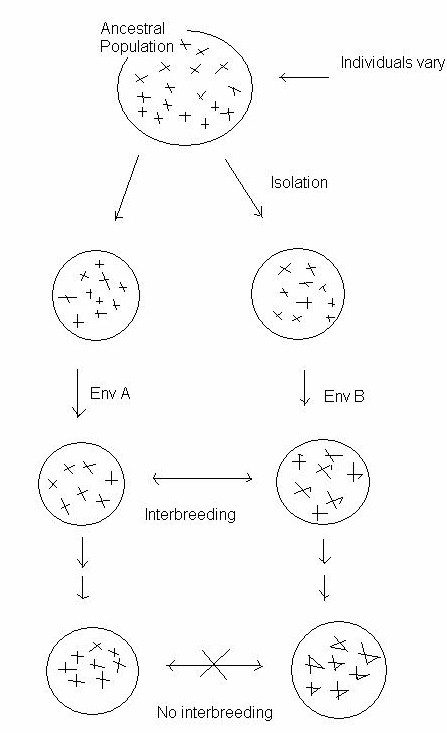
Variation, Selection & Evolution in Plants
I. Evolution by Natural Selection
A. Charles Darwin, Alfred Russel Wallace
-Origin of Species (1859)
1. What is evolution?
2. What is natural selection?
B. Evidence for Evolution and Natural Selection
1. What is the evidence that species are related and not independent entities?
-Biogeography (Distribution of species)
-not just environment that determines where organisms are found
Galapagos islands Galapagos finches adaptive radiation
2. Evidence species have changed through time.
3. Evidence for natural selection
-natural selection is ongoing: ecotypes in Achillea glandulosa
4. Evidence from molecular biology
C. What is the basis of heritable variation in populations?
1. mutation mutation2 transposons
D. Speciation
How does it come about?

1. Factors that act on a population gene pool
POPULATIONS EVOLVE NOT INDIVIDUALS
Allopatric or geographic speciation
Sympatric or "same place" speciation
Types of Species:
Organisms are different species when:
2. Polyploidy (sympatric)
Gamete formation depends on the presence of homologous pairs in meiosis
polyploidy can make "true" hybrids fertile
sunflowers in American west: Helianthus annus X H. petiolaris = H. anomalis
II. Artificial Selection
A. Inbreeding
-Self-pollination or inbreeding desirable cross-pollination
-"hybrid" strains
B. Asexual reproduction
III. Plant Systematics/Taxonomy
A. Early History
1. Theophrastus (370-287 B.C.)
-Enquiry Into Plants
2. Dioscorides (first century A.D.)
3. The Herbalists (Renaissance)
-Doctrine of Signatures
Hepatica acutiloba; Pulmonaria officinalis; Ranunculus ficaria; Sanguinaria canadensis 1 2
4. Carolus Linneaus (1707-1778)
B. How are plants named?
1. common name
2. scientific name